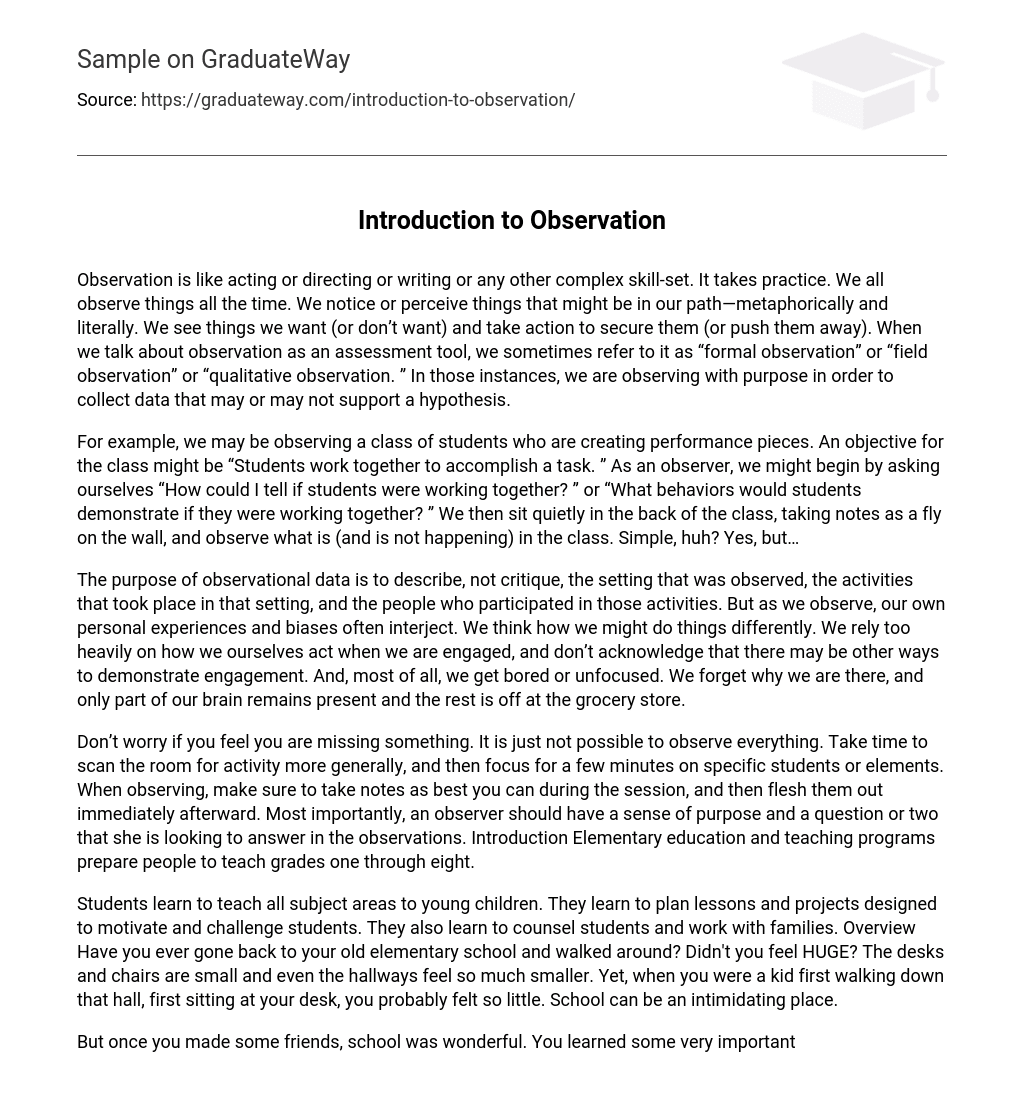Observation is a skill that requires practice in various fields such as acting, directing, writing or other complex skill-sets. We are always engaged in observing and perceiving things both figuratively and literally on our path. We identify our preferences and dislikes and act accordingly to obtain or avoid them. When we discuss observation as an evaluation method, it can be referred to as “formal observation,” “field observation,” or “qualitative observation.” In these cases, the purpose of our observation is to collect data that may or may not support a hypothesis.
The scenario involves observing a class of students as they create performance pieces. The aim of the class is for students to work together and successfully accomplish a task. As observers, we may wonder how we can identify if students are genuinely collaborating or what behaviors would indicate their collaboration. To uncover this information, we take a silent position at the back of the classroom and actively and passively document our observations. However, there’s a twist…
Observational data is meant to describe the observed setting, activities, and participants rather than critique them. However, our personal experiences and biases can impact our observations by causing us to favor certain approaches and overlook different ways of engagement. Additionally, we may become bored or distracted during the observation, losing sight of its purpose and letting our minds wander elsewhere.
Don’t fret if you believe you’re lacking something. It’s simply impossible to observe everything. Dedicate some time to scan the room for general activity, then concentrate on certain students or elements for a few minutes. During the session, make a point to take notes to the best of your ability and expand on them right after. The most important aspect is for the observer to have a clear purpose and a couple of questions that they aim to answer through their observations. The introduction of elementary education and teaching programs is designed to equip individuals to teach students in grades one through eight.
Students learn various skills in teaching young children, including planning motivating lessons and projects, providing counseling to students, and collaborating with families. Have you ever revisited your elementary school and noticed how small everything seems in comparison to when you were a student? The desks, chairs, and even the hallways appear much smaller. However, as a child first experiencing these surroundings, it is natural to feel small and intimidated in the school environment.
However, once you formed friendships, school became a delightful experience. In the early years, you acquired invaluable skills such as reading and basic arithmetic, which are utilized in your daily life. The main contributor to this success is your teacher. Typically, becoming an elementary teacher entails obtaining a bachelor’s degree from an elementary education program. Such programs focus on instructing you on the psychology of young minds and their development. You gain knowledge on utilizing technology in the classroom and assessing student advancement.
In an elementary education program, individuals acquire knowledge in multiple subjects including reading, math, and art. This knowledge is subsequently used to design courses and develop teaching materials. During the student teaching phase, participants have the opportunity to apply this information and explore their own ideas. Some programs provide the option to specialize in a specific subject area, such as math, allowing for a concentrated focus on teaching mathematical skills to children. The main goal of elementary education programs is to prepare individuals for instructing students from grades one through eight.
Programs for middle school education aim to prepare individuals as teachers for students in grades four through nine, regardless of whether they attend public or private schools. Many colleges and universities offer specialized programs in elementary teacher education, which enable students to obtain a bachelor’s, master’s, or doctoral degree in addition to a postbaccalaureate certificate. Typically, completing a bachelor’s degree requires approximately four years of full-time study after high school, while graduate degrees generally take two to five years to complete after obtaining a bachelor’s degree.





